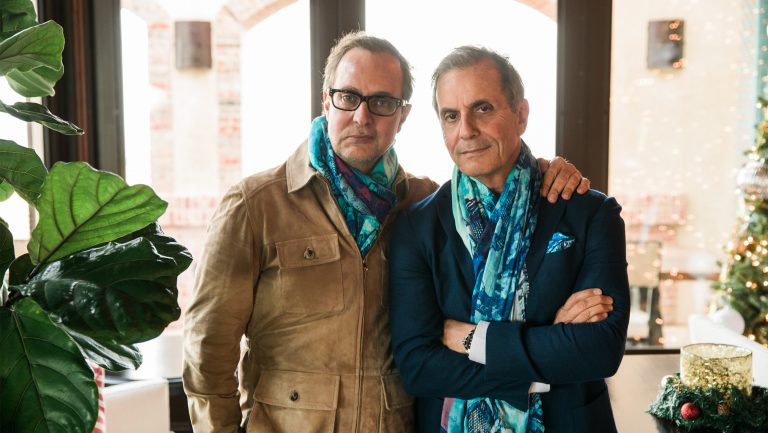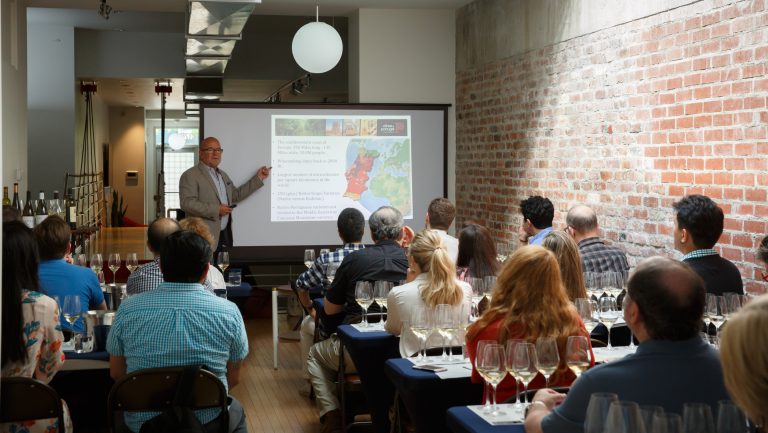This advertising content was produced in collaboration with our partner, DAOU Vineyards.
When Georges and Daniel Daou came to Paso Robles to produce Cabernet Sauvignon that would rival the best in the world, few people thought it was possible. The brothers, however, knew that this was not some quixotic quest: after all, Paso Robles had everything going for it, and despite its reputation as a region more suited to hot-climate-loving Zinfandels and Rhône grape varieties, the Daous were convinced of its potential to produce remarkable Cabernet Sauvignon and Cabernet-based blends.
Vintage after vintage, the brothers have been proven right in the most delicious, dramatic, and age-worthy ways. Over the course of the last decade, DAOU wines have come to define and embody the entire category of world-class Paso Robles Cabernets, earning sky-high scores from critics as well as a devoted consumer and sommelier following.
From DAOU’s everyday-priced Paso Robles Cabernet Sauvignon to the epic Soul of a Lion from the DAOU estate, these are the Cabernet Sauvignons and Cabernet blends that have convinced everyone of Paso’s greatness.

Don’t miss the latest drinks industry news and insights. Sign up for our award-winning newsletters and get insider intel, resources, and trends delivered to your inbox every week.
Everything is Possible with World-Class Terroir and Climate
Conventional wisdom holds that the best Cabernet Sauvignons in the country come from Napa Valley. No wonder: The most famous producers have historically been located there, and the great appellations of Napa have become every bit as synonymous with world-class reds as the iconic communes of Bordeaux’s Left Bank.
Georges and Daniel Daou knew better. In 2007, they acquired Hoffman Mountain Ranch, an historic property that would emerge as the DAOU Mountain estate. They had long been searching for the perfect climate and terroir for Cabernet Sauvignon, and they found it here in the Adelaida District, nestled into the coastal mountains of westside Paso Robles.
“What history tells us is that the most sought-after soils in the entire world, when it comes to growing vines, are actually called, in French, argilo-calcaire, or in English, calcareous clay,” says Daniel, who is DAOU’s winemaker. “Most of Bordeaux is clay with a limestone subsoil. Burgundy, the same … also Alsace, Champagne, Loire Valley. In the south of France, Tuscany, parts of Austria, Germany, Spain, Portugal, south of England. It doesn’t matter where you look, you’re going to find these soils.”
Of course, this was exactly the type of soil that the brothers found on DAOU Mountain.This combination of clay and limestone, Daniel explains, results in three things: A deep sense of minerality and of tasting where the grapes were grown, as opposed to just their fruit characteristics; the ability to produce wines that maintain enough acidity despite generous ripeness in warmer climates; and the ability to allow the vine-grower to dry farm.

Needless to say, Daniel is an avowed purist when it comes to terroir. “Terroir is going to dictate the quality of your wine,” he says. “You can have the greatest winemaker in the world, but if you grow grapes on the wrong terroir, you’re going to turn it into a lab experiment. You’ll need to add sugar, you’ll need to add acid. You will have to basically drink a lab-made wine, as opposed to a terroir-driven wine.”
In addition to the great soils of Paso Robles and especially of the Adelaida District, the climate is perfect for growing Cabernet Sauvignon that balances power and elegance in equal measure. Daniel is quick to note that Paso Robles is often mischaracterized as a uniformly hot region, a point of view that overlooks the cooling breezes from the Pacific coastline just a few miles away from DAOU Mountain.
“How would you like it if you went to Napa, you stopped in Carneros, left Carneros, and wrote an article that said, ‘I’ve been to Napa and Sonoma, and it is very cold.’ You’d wonder how they grow Cab. That wouldn’t be very smart. Yet critics and journalists come often to Paso in the summer, they stay downtown, they leave and say, ‘Well, I’ve been to Paso, and it’s really hot in Paso.’ Okay, let’s talk about that then. Paso is 614,000 acres. It is larger than Napa and Sonoma put together. So it all depends on where you are…The first question anybody should be asking when you talk about climate is, ‘Where are you in Paso?’”
Daniel has analyzed the climate within a two-mile radius of the winery in the Adelaida District and has found that it’s the “best terroir” for growing Bordeaux varieties because the land is at 2,200 feet in elevation but only about 14 miles from the Pacific Ocean—the only site in California of its kind. The month-by-month climate of DAOU Mountain, in fact, closely corresponds to that of St. Helena in the heart of Napa Valley. Meanwhile, the mountain’s soils are not only similar to Bordeaux, but also pitched along steep slopes that help foster native fruit intensity.
In other words, DAOU is situated in the sweet spot for producing Cabernet Sauvignons that exhibit power, grace, and potential longevity. “Call it luck, call it fortune, call it destiny—I’m not sure,” says Daniel.
Making the Most of Mother Nature—With an Assist from Science
Land and climate set the stage for iconic wines, but it takes vision and wherewithal to translate them into iconic bottlings. For Daniel, great wine isn’t just about the terroir and climate in which the vines are grown; it’s also a consequence of the wine’s phenolic quality and character —at every price point. The DAOU Reserve Cabernet Sauvignon, for example, which “typically sells for $50 in the market—that wine has more phenolics than 99 percent of all the wines that sell for more than $100 a bottle,” Daniel points out.
Daniel’s ability to achieve these levels of phenolics, even in less expensive bottlings, all comes down to his determination to make the most of what nature gives him vintage after vintage. In addition to applying viticultural methods that maximize phenolic levels in the fruit, he has also created proprietary fermentation practices that enable him to carefully balance out phenolic development in the resulting wine. He then marries these scientific efforts with his own sensory analysis to achieve a perfect outcome.
The significance of this cannot be understated, as phenolics are the natural building blocks of a wine’s color, mouthfeel, density and length.
“Traditionally,” he says, “how have winemakers balanced out wines? Well, that’s where blending comes in. So you make the wine, you put it in a barrel, and you wait a couple months. Then you get together, you taste your samples, and compensate for the deficits by blending between varieties, maybe to build or cut back on tannin as you go.”
“That’s how France has done it for centuries. And that’s how people do it throughout the wine world,” he continues. “I questioned this, because, in reality, it’s hit and miss. Our approach is to deliver beautiful phenolics from the get-go.”
Instead, he reverse-engineered the method, tasting and evaluating hundreds of wines from DAOU and other producers. He then measured phenolics according to ideal parameters to achieve the balance and velvety, fine textures that have become a signature of DAOU wines.
This, Daniel says, is a totally different way of making wine. “I balance the wine while it’s being created,” he notes. “I redefined the way wine is made.”

Dispatch
Sign up for our award-winning newsletter
Don’t miss the latest drinks industry news and insights—delivered to your inbox every week.










